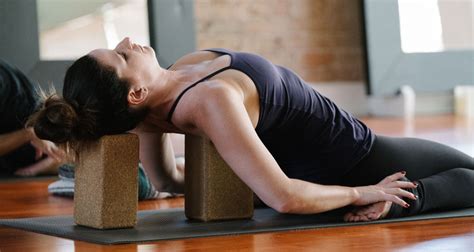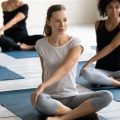How Yoga Practitioners Can Enhance Standing Poses Using Props
Introduction
Yoga standing poses are fundamental to developing strength, balance, and alignment. However, for many practitioners, these postures can be challenging, especially when flexibility, strength, or balance is limited. This is where props—such as blocks, straps, and walls—can play a crucial role. Props provide support, increase awareness, and allow practitioners to explore poses more deeply and safely. This article explores the benefits, practical applications, and best practices of using props in standing yoga poses, emphasizing how to enhance practice while ensuring correct alignment and avoiding injury.
Key Concepts
- Props: Objects used to support the body in yoga poses, including blocks, straps, bolsters, and walls.
- Alignment: Proper positioning of the body to maximize benefits and reduce injury risk in yoga postures.
- Standing Poses: A category of yoga postures done on the feet, such as Warrior I, Tree Pose, and Triangle Pose, which focus on strength, balance, and stability.
- Adaptation: Modifying poses using props to accommodate different levels of flexibility and strength.
Historical Context
The use of props in yoga was popularized by B.K.S. Iyengar, who revolutionized modern yoga by incorporating blocks, straps, and other supports into traditional yoga practices. This allowed practitioners to experience poses regardless of their flexibility or experience level. Before Iyengar, the practice was less accessible, especially for beginners or those with physical limitations. Props opened up yoga to a broader audience, enabling more people to reap its benefits.
Current State Analysis
Today, props are used widely across various yoga styles, not just in Iyengar yoga. Teachers incorporate them into beginner and advanced classes alike, recognizing the importance of accessible yet challenging poses. However, misconceptions remain. Some practitioners view props as crutches, assuming they are only for beginners or people with physical limitations. This article addresses these misconceptions and illustrates how props can benefit even the most seasoned practitioners by enhancing alignment, increasing strength, and deepening awareness.
Practical Applications of Props in Standing Poses
- Blocks in Warrior I (Virabhadrasana I): A block under the hands helps maintain balance and alignment when transitioning into the pose, especially for those with tight hips or hamstrings.
- Strap in Triangle Pose (Trikonasana): A strap wrapped around the front foot and held by the opposite hand allows for a deeper stretch in the hamstrings and better alignment in the torso.
- Wall Support in Tree Pose (Vrksasana): Using the wall for balance in Tree Pose encourages stability for those still developing balance, helping to engage the leg and core muscles effectively.
Case Studies: How Practitioners Benefit from Props
In one class, an advanced practitioner who struggled with balance in Half Moon Pose (Ardha Chandrasana) began using a block under her bottom hand. This small adjustment allowed her to extend fully through the lifted leg while maintaining balance, which improved her overall alignment and strength. Another example involves a beginner struggling with hip flexibility in Warrior II (Virabhadrasana II). Using a block under the front thigh provided the necessary support to hold the posture for a longer period, improving both strength and flexibility over time.
Below is a table that outlines common challenges and the corresponding prop solutions:
| Challenge | Prop Solution | Effect |
|---|---|---|
| Lack of balance in standing poses | Block under hands | Improves stability and alignment |
| Tight hamstrings | Strap for extra reach | Enables deeper stretching |
| Difficulty maintaining alignment | Wall for support | Encourages proper positioning |
| Hip flexibility issues | Block under thighs | Reduces strain while improving posture |
| Weak core muscles | Wall in balance poses | Helps engage core muscles |
Stakeholder Analysis
Props are beneficial to various yoga practitioners, from beginners to advanced students. Beginners gain confidence and avoid injury by using props, while advanced practitioners use them to refine alignment and deepen postures. Teachers benefit from incorporating props into their classes by offering modifications that ensure safety and accessibility for all students. Studios can also attract a broader range of students by promoting the use of props, making yoga more inclusive.
Implementation Guidelines
- Start with foundational poses and incorporate props gradually.
- Educate students on the purpose and benefits of props to overcome resistance.
- Provide clear instructions on using props correctly, emphasizing that props enhance rather than weaken the practice.
- Integrate props in both beginner and advanced classes to normalize their use for all skill levels.
Ethical Considerations
Incorporating props in yoga classes must prioritize inclusivity and accessibility. It’s essential to address the misconception that props are only for beginners. Teachers should approach the use of props as a way to enhance a practitioner’s experience, not as a sign of inadequacy. Proper education on this subject can ensure props are seen as valuable tools rather than limitations.
Limitations and Future Research
While props are a powerful tool for accessibility, there are limitations. For example, over-reliance on props can prevent practitioners from developing the necessary strength or flexibility. Future research could explore how different types of props affect muscle engagement, strength development, and long-term flexibility. Additionally, studies on how props can be adapted for specific populations, such as seniors or people with disabilities, would be valuable to expand the benefits of yoga.
Expert Commentary
Yoga experts emphasize the importance of using props to deepen practice. As one instructor noted, “Props allow practitioners to find stability in challenging poses without sacrificing alignment. They empower individuals to explore their boundaries safely.” Another expert commented, “Far from being crutches, props are tools that enable practitioners to progress with integrity and mindfulness. Every time I use a block or strap, I feel more connected to the pose, not less.” These perspectives highlight the value of props in fostering both physical and mental growth in yoga practice.








